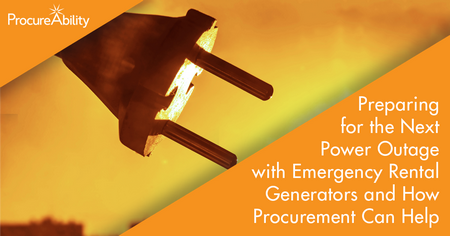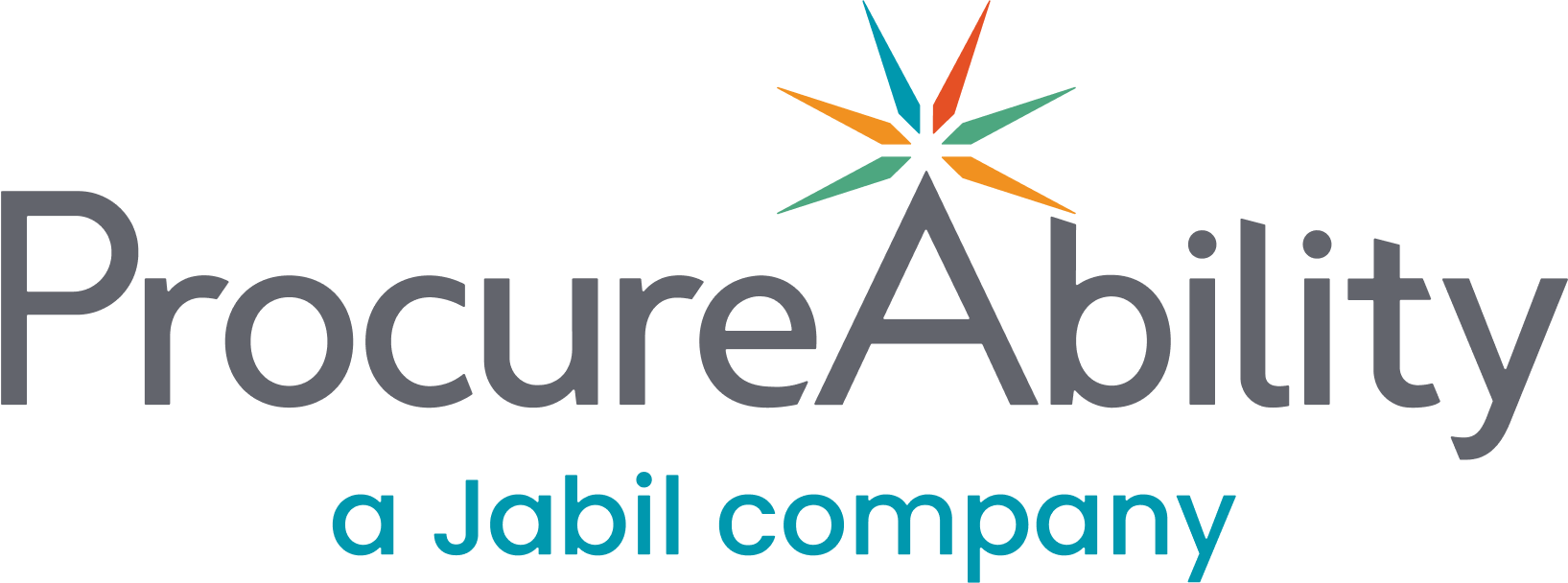
Power outages affect millions of people across the US every year. Major recent events that resulted in outages include winter storms in Texas, hurricanes across the South and Eastern US, and wildfires in the West. Outages and power shutdowns can impact all industries and cause production losses, inventory deterioration, loss in sales, damage to critical equipment, and decreased employee productivity. While these impacts may be obvious to most, it is less obvious that Procurement can play a key role in mitigating the effects by implementing an emergency generator procurement strategy.
Businesses can either choose to buy or rent a generator based on their specific requirements and capabilities. Factors such as costs, maintenance, and project timelines determine whether a company should buy or rent an emergency generator.
Why should Procurement teams prefer renting an emergency generator?
Although detailed cost-benefit analysis should decide the rent vs. buy decision, there are advantages for businesses to prefer renting over buying:
- Cost-Effective: Cheaper if the requirement is for short periods (ex: seasonal power outages)
- Space optimization: No permanent structure or space required
- Reduced maintenance costs: Most rental companies include service and maintenance in the rental fees
- Flexibility: Renting allows flexibility of sizing generators based on changing needs
How can Procurement teams add value while sourcing emergency generators?
Effective Planning
An effective procurement plan increases the efficiency of the procurement process by describing: the detailed procurement schedule, the type of contract, the product demand (specific type and sizes of generators required), implementation milestones along with important deadlines, associated risks, and vendor evaluation metrics – all of which are extremely critical when sourcing emergency generators. As the annual capacity necessary would be forecasted by the line of business/operations teams, early alignment of procurement goals with the technical business requirements is important to achieve defined cost and timeline targets. Sourcing should:
- Be cognizant of supply constraints especially during peak seasons for wildfires, winter storms, or hurricanes. As supply may be limited during outage, plan early and lock in contracts with rental companies.
- Understand detailed technical requirements such as generator size, space, voltage, fuel, emissions, ancillary equipment, cabling, location, etc.
- Release RFI’s early to gather information and conduct on-site feasibility studies, if required.
Comprehensive Market Research
Procurement should prepare a detailed analysis of the emergency generator supply market describing the multiple characteristics of the market using frameworks as applicable. The supply market analysis helps to identify supply trends, and to understand the risks associated with procuring temporary generators. Analysis could include regional and local power rental market shares, seasonality, and cost trends by fuel type (Diesel, Natural Gas, Battery etc.), competitive landscape, vendor analysis and inventory availability. Procurement should also consider the following key aspects during market research:
- Reliability and safety are critical to power generation. Conduct studies to recognize and pin-down the most reliable power rental suppliers in the market. Suppliers could be regional (city or state-specific) or multinational, depending on size, quality, technology, cost, and services.
- Understand influence of local regulatory bodies and laws (for example different states may have various emissions requirements governing commercial generators), and discuss the impact with legal teams, if required.
- Gather knowledge of advancements in generator technology, like clean energy alternatives to diesel (solar trailers, battery storage, and natural gas).
- The supply market is volatile due to the unpredictable nature of outages. Assess competition and bargaining power to mitigate cost increases during specific seasons of extreme weather.
Total Cost of Renting
Rental cost of the generator itself is just a portion of the total cost (~30-40% depending on size of generator), whereas other fixed, variable, and service costs make up the rest. Fixed costs also include cables and ancillary equipment (transformers, load banks, trailers, switchgear, and fuel tanks) required to run the generator. Procurement must consider all pricing elements in a detailed cost breakdown/should-cost analysis to help determine the total financial impact in various outage scenarios. Some recommended areas of focus while evaluating the total cost are:
- During negotiations with vendors, Procurement should discuss not only the total fixed costs but also variable elements such as labor rates for servicing, costs/mark-ups for fuel (diesel or natural gas), one-time costs for mobilization/demobilization of generators, and round-trip trucking to and from the location, all of which can affect the overall cost.
- Although multi-year contracts would increase the total rental cost (especially if requirement is only seasonal), some vendors may offer significant discounts for multi-year rental agreements; therefore, a detailed cost benefit analysis should be conducted to assess total savings.
In the ever-changing world of temporary power generation, with a dynamic supply market and volatile emergency power demand, Procurement plays crucial roles; not only to ensure business continuity, but to improve profitability by reducing bottom line impacts during power outage events.
Source: 1) Economic benefits of increasing electric grid resilience to weather outages
Subscribe to ProcureAbility Insights to access whitepapers, presentations, plus our latest thought leadership.



